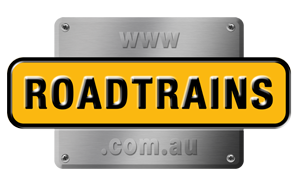MSM Mongolia demands Australian-made accuracy Elphinstone Weighing Systems loadcells to improve safety for a gruelling copper ore haulage operation.

Each road train is 26 meters long and has 56 wheels, making it capable of a gross weight of 240 tonnes, delivering a total payload of 160 tonnes.
At the Oyu Tolgoi gold and copper project in the south Gobi Desert region in Umnugovi province of Mongolia, only 80 kilometres north of the Chinese-Mongolian border, the monotonous thump of the giant jaw crusher pounding tonnes of copper ore echoes dully across the vast desolate landscape. Giant wheel loaders with flashing orange lights scoop large bucketfuls of ore out of nearby stockpiles to feed the crusher’s insatiable hunger for the lucrative ore.
Open-pit mining commenced at the Oyu Tolgoi site in 2011. The copper concentrator, the largest industrial complex ever built in Mongolia, began processing mined ore into copper concentrate in 2013. Underground production commenced in March 2023, making it a high-performing surface and underground integrated copper business and one of the most important copper producers in the world. Gold production to date equates to over 173,000 tonnes. The mine site employs 21,000 workers,
According to the Rio Tinto website, copper is essential for a low-carbon future. Their current forecast predicts peak production at Oyu Tolgoi to produce 500,000 tonnes per annum of copper by 2028, equivalent to what’s needed to produce 1,580 Wind turbines and 16,400 Electric battery vehicles per day.
Because the most valuable ore lies deep underground, Oyu Tologoi utilises a state-of-the-art control room to oversee operations in approximately 200 kilometres of tunnels. The tunnels have an average height of 5.5 meters and a width of 5 meters.
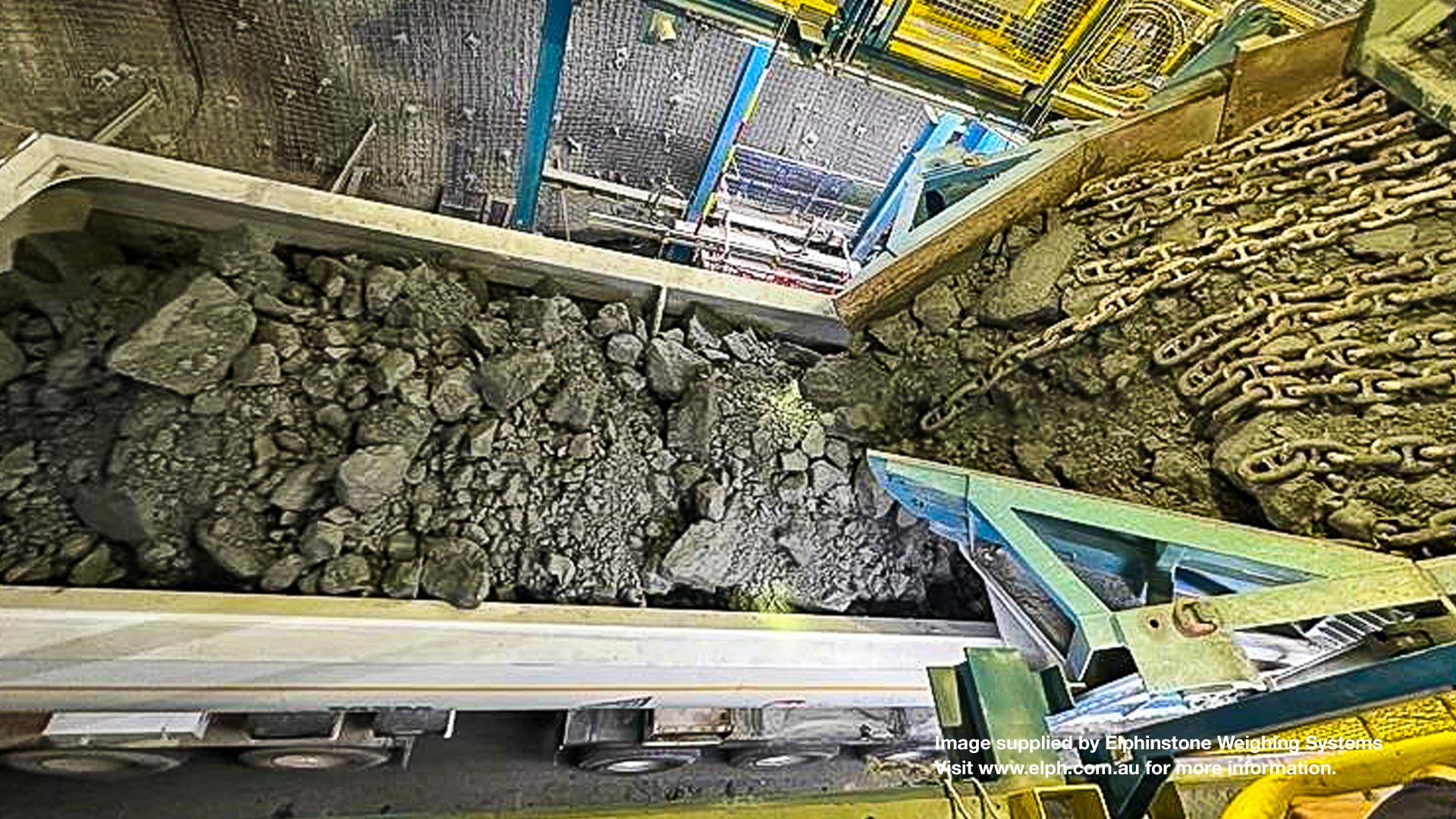
Once the mine is at full production rates of 95,000 tonnes per day, the road trains will deliver approximately 1200 trailer loads of ore per day.
The underground double road trains are a critical component in the Oyu Tolgoi mining operation. They transport copper ore in bulk along the three-kilometre underground haul road loops between the Truck Loading Stations (TLS) and the underground primary crusher. The crushed ore is then transported seven kilometres to the surface via the MHS2 decline conveyor system.
Elphinstone Weighing Systems Sales and Field Service Technician Stephen Coulembier is sitting patiently at Chinggis Khaan Airport in Ulaanbaatar along with nearly 450 workers waiting to fly into the company’s Oyu Tolgoi (OT) mine. Luckily for Stephen, it’s a short wait as he and the crew commissioning the new road trains are given priority status on the first flight.
Stephen had arrived in Ulaanbaatar a few weeks earlier to install the Elphinstone Weigh Multi Reader to the on-vehicle weighing system at the Mercedes-Benz dealership MSM Mongolia.
Once the Elphinstone Weighing System installation and pre-delivery were completed, the new 4163 Mercedes-Benz 8×4 Arocs, trailers and dollies were transported the 780 odd kilometres from the dealership to the Oyu Tolgoi mine site. The trailers and dollies were manufactured in Indonesia by Sanggar Sarana Baja (SSB), featuring Jost steerable Tridec suspension and axles. The steerable Tridec axles have automatic hydraulically operated rear steering on each trailer, which allows the trailers to turn a tight radius and follow a very accurate path around the tight corners in the mine tunnels.
Download and print the article HERE
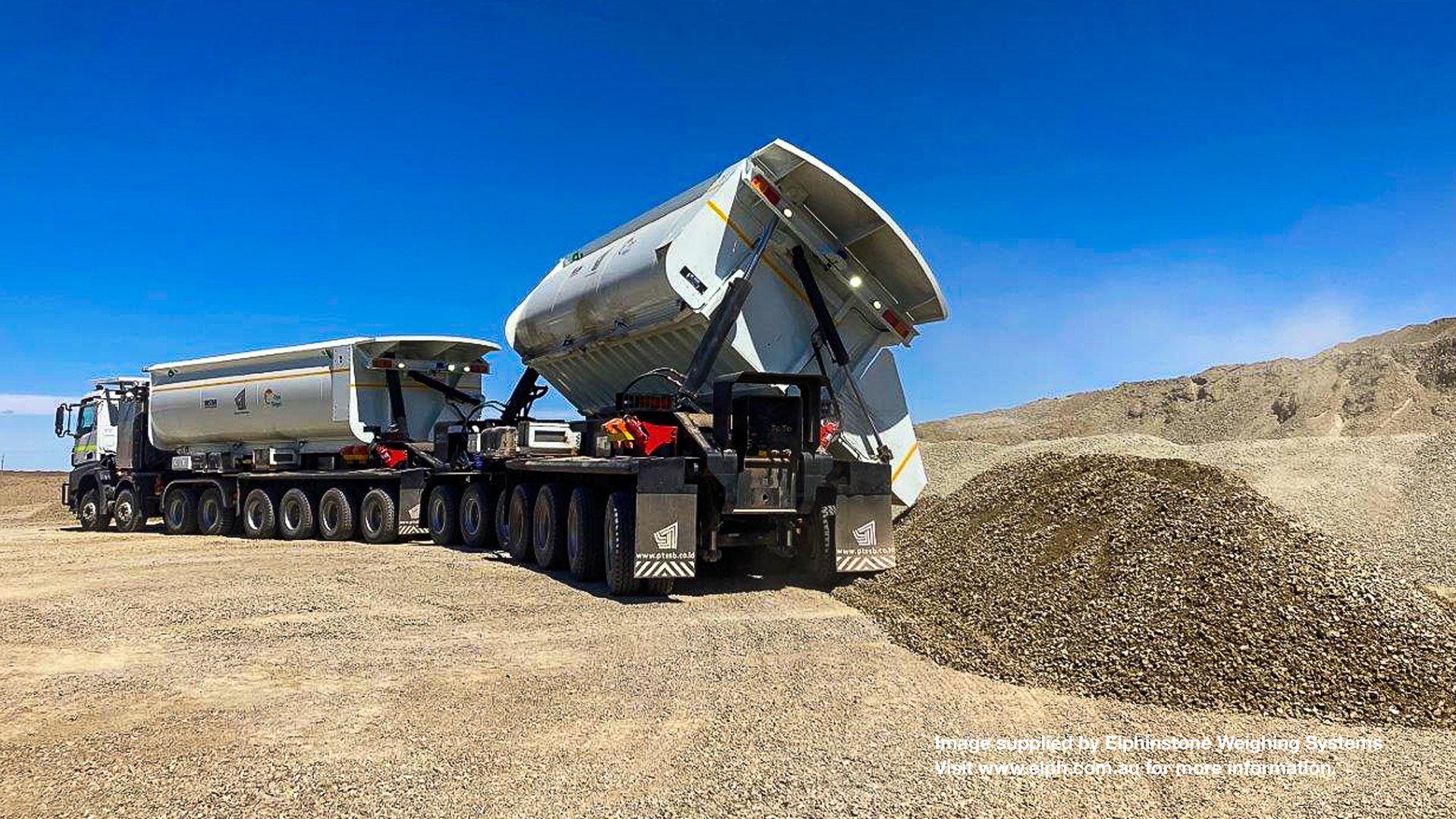
The productivity gain is huge, over three times the payload of a conventional underground haul truck, which is only capable of a 50-tonne payload
Each road train is 26 meters long and has 56 wheels, making it capable of a gross weight of 240 tonnes, delivering a total payload of 160 tonnes. The productivity gain is huge, over three times the payload of a conventional underground haul truck, which is only capable of a 50-tonne payload – this means much higher productivity, less fuel, and less emissions.
At the time of writing, four road trains were operating in the mine. However, as more draw bells (the opening through which caved ore is extracted once the undercutting is completed) are developed- the intention is to increase the fleet size to 11 Road Trains pulling 22 trailers. Once the mine is at full production rates of 95,000 tonnes per day, the road trains will deliver approximately 1200 trailer loads of ore per day.
This means that one double road train will tip 160 tonnes of ore into the crushers every 2.5 minutes. Interestingly, Oyu Tolgoi is also working on fully autonomous capability. This will allow future road trains to operate driverless for an additional three to four hours each day (during shift changes, lunch, and blasting times) to maintain 24-hour production and keep the crushers fed with ore.
The commencement of the new road train project began in February 2022 with the goal of detailed design, manufacture, and delivery to the site, plus all the support infrastructure to be completed within 18 months.
Stephen added that this goal was achieved on time and budget thanks to the efforts of all vendors and the team involved.
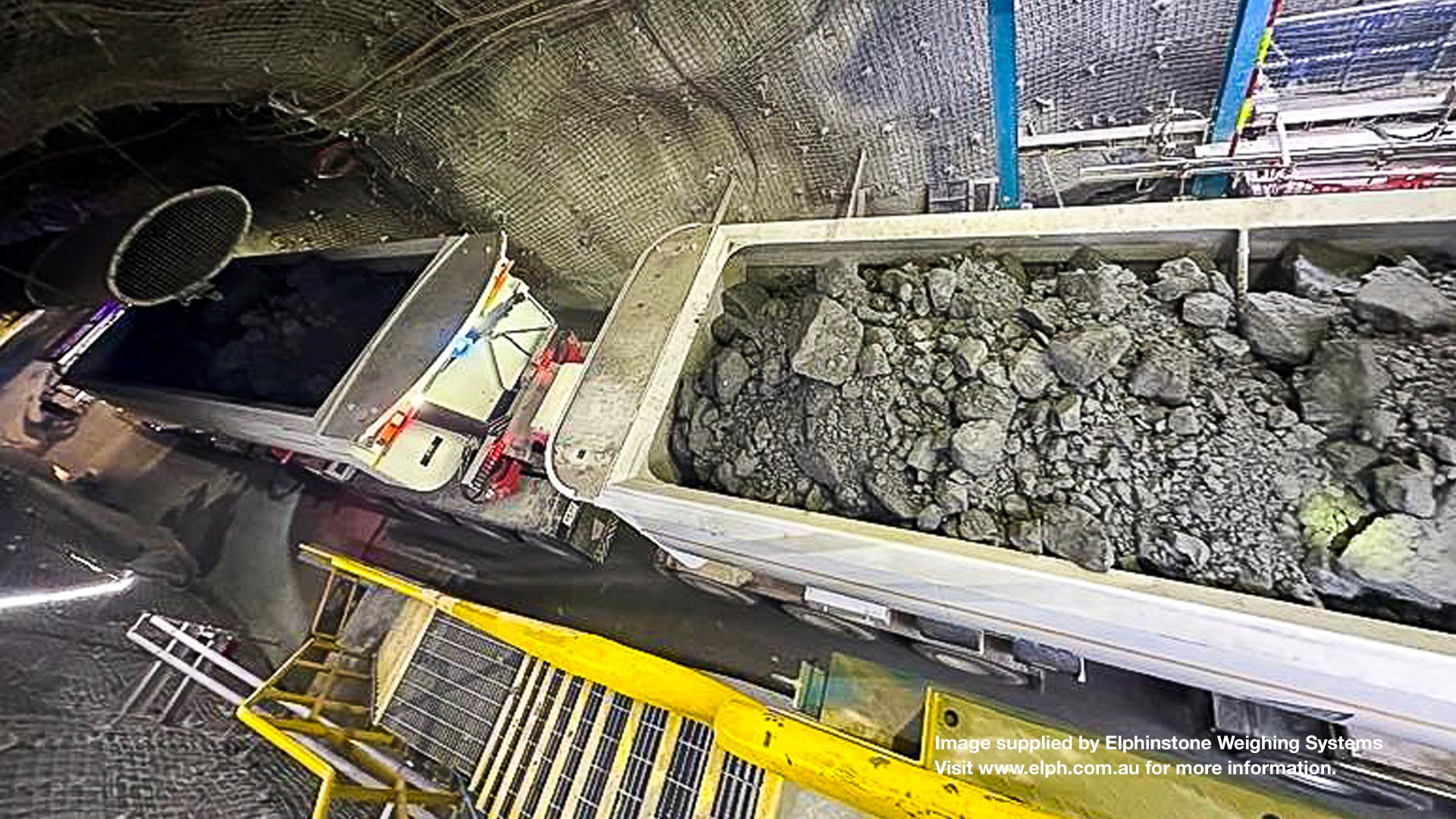
Oyu Tologoi utilises a state-of-the-art control room to oversee operations in approximately 200 kilometres of tunnels. The tunnels have an average height of 5.5 meters and a width of 5 meters.
Safety Measures
Apart from all the usual safety features you would expect on quality Mercedes trucks, the road trains are Mine Spec’d for Oyu Tolgoi underground conditions – such as the latest engine with strict Euro-5 emission control, ANSUL fire suppression system, ROPS, frontal and side protection bars, upgraded failsafe brakes and latest turbo retarder clutch system, plus all the latest communication, camera, and data systems.
The vehicle design also includes some interesting special features, such as the Indurad Xtonomy radar driver guidance system, to allow the operation of such large vehicles in small underground tunnels. These assist the driver in knowing exactly how close each trailer is to the walls in real time and prevent trailers from crashing into the tunnel walls.
The Elphinstone onboard weighing system enhances safety by enabling maximum payload whilst never overloading the combination beyond the safe designed load limits of the vehicle.
Stephen provided scale calibration and maintenance training to the Oyu Tolgoi fleet service team as part of the commissioning process.
Easyweigh with Multi Reader – How it works.
Elphinstone Weighing Sytems’ Easyweigh with Multi-Reader is a fully integrated intelligent digital vehicle weighing system with multiple features designed to suit a diverse range of on-vehicle weighing applications.
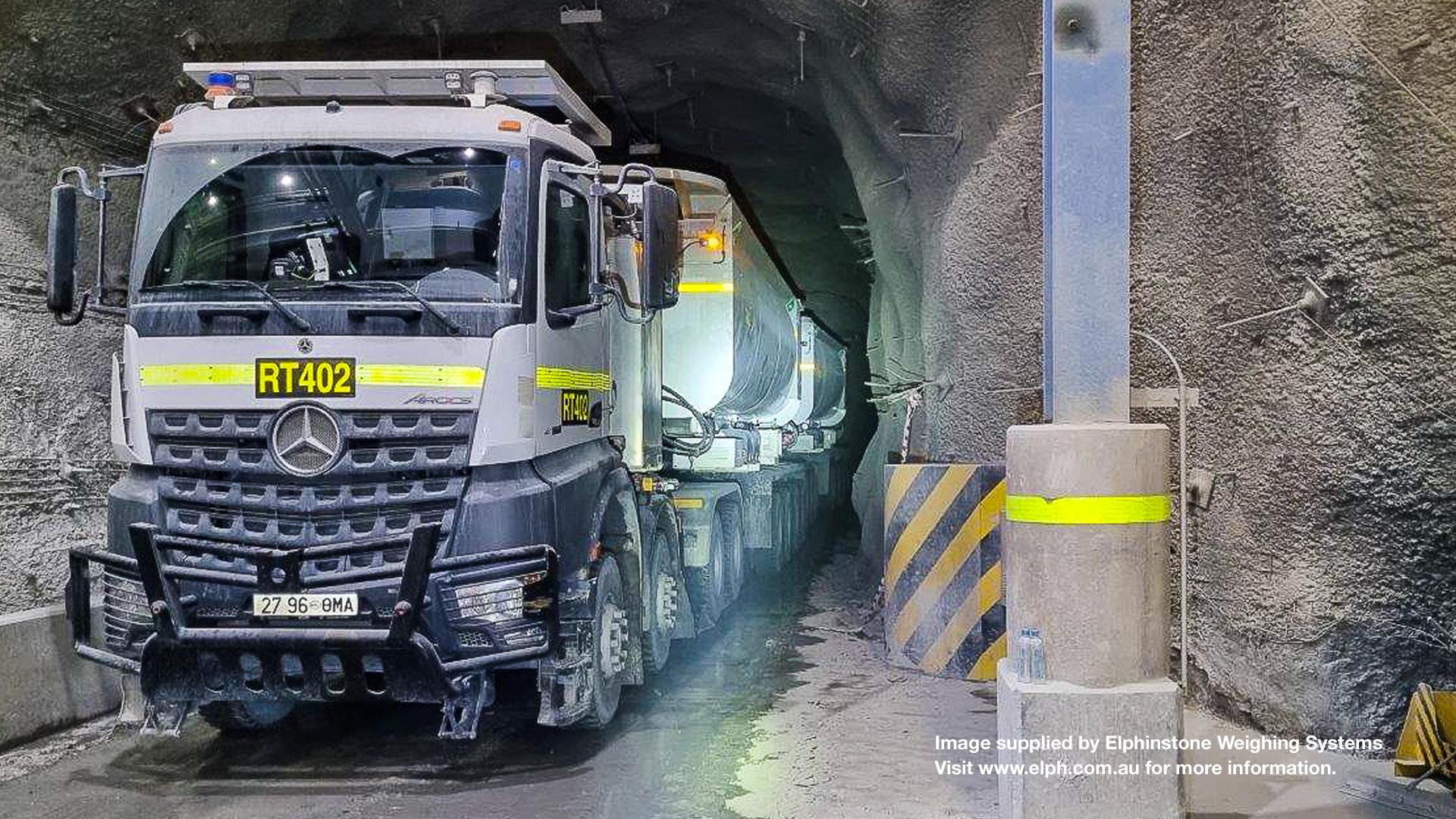 The Easyweigh Multi-Reader weighing system features a user-friendly display with four lines of text displaying multiple channels and a total weight on one screen.
The Easyweigh Multi-Reader weighing system features a user-friendly display with four lines of text displaying multiple channels and a total weight on one screen.
The system can read up to 15 channels. Channel-1, the master unit, is connected to one or more slave units. The primary function of the slave unit is to receive an analogue signal from a loadcell or transducer, read the signal, convert it to a digital signal, and then transmit it to the Easyweigh Multi-Reader display.
Each slave unit is defined as a channel and displayed on the dash-mounted Easyweigh Multi-Reader screen. Mechanically, the channel is an independent group of loadcells or transducers through which the payload mass is linked with the ground via the axle group.
For instance, the loadcells on the Oyu Tolgoi Mercedes-Benz Arocs 4163 tractor unit send information to the master unit and display it as channel-1 on the Multi-Reader unit. The hydraulic transducer information from the slave unit on the lead trailer is channel-2. The second slave unit receives information from the 5th wheel loadcells mounted on the dolly and displays this information as channel-3. The third slave unit on the rear trailer receives information from the trailer’s hydraulic transducers, which is then viewed on the display unit in the cabin as channel-4.
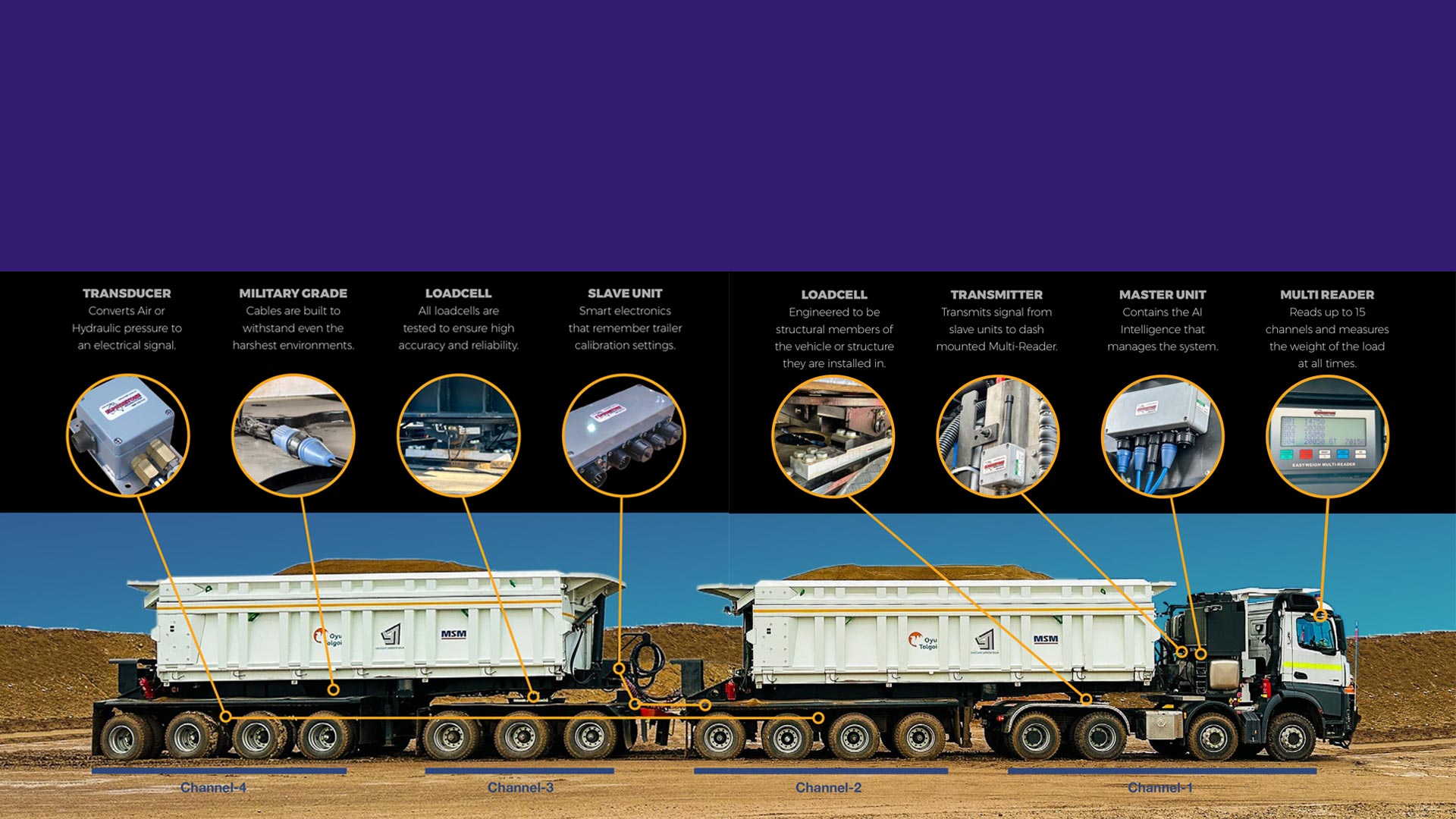
The Easyweigh Multi-Reader weighing system features a user-friendly display with four lines of text displaying multiple channels and a total weight on one screen.
Furthermore, this system is unique in its operation because, through its AI intelligence, it is smart enough to determine how many different channels are connected at any time. All channels beyond channel-1 can be connected in any combination and still retain the correct calibration figures and not affect the operation of the weighing system. For example, when a tractor unit is in the workshop for repairs, another tractor unit can connect to the road train combination, and the weighing system will automatically function without the need to recalibrate the unit. On the other hand, if a trailer was taken out of the combination and another trailer was substituted, the AI intelligence would automatically recognise the different trailer, and the weighing system would continue to function normally without any additional recalibration requirement. It is a genuinely interchangeable system, a massive advantage in a transport fleet environment where trucks often swap trailers.
In a fleet environment, like the Oyu Tolgoi transport operation where multiple trucks are loading at the same place, it is beneficial for the loader driver or hopper operator to have the optional radio remote display so that they can see the loads on each truck without creating excessive communication over the radio.
In addition, the Easyweigh Multi-Reader system can communicate with a wide range of attachments, such as a computer, data logger, limit lights, printer, or scoreboard. Other optional features include a GPS location system and Bluetooth Easyview functionality.
If you would like more information on how Elphinstone’s unique weighing systems work or can benefit your operation, contact Elphinstone Weighing Systems through their website: www.elph.com.au

